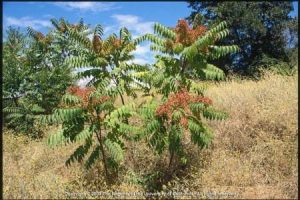In times past, miners carried a caged canary with them deep into the coal mines. The canary was sensitive to toxic gases and alerted miners to the immediate need for action. Today, birds still provide a clear-cut call to action. As many as half of all bird species, plus a like number of all plant and animal species, could be headed toward extinction by mid-century.
It is, however, plant diversity that is believed to be a crucial basis to species stability. A yard, park or forest planted with a variety of shrubs and trees will better survive the onslaught of drought and insects than will a single species. Bees decline with mono-cropping but thrive with a smorgasbord of nectar-producing trees and plants.
The acronym H.I.P.P.O. is used by conservation biologists to classify the forces that spell species demise. These forces typically work in concert to accomplish their devastation.
H: Habitat destruction.
“Habitat loss or modification is the main threat to most rare species,” states the U.S. Fish and Wildlife Service. Decimation of our wetlands, riparian areas and oak woodlands have propelled California into becoming the state with the most endangered and threatened plants and animals.
For example, wildland conversion to agriculture and housing along with polluting pesticides have driven the monarch butterfly into decline.
I: Invasive species.
Because of their ability to rapidly multiply, invasives from other lands push out native vegetation while scarfing up surface and ground water. They also displace native wildlife and degrade their forage, deplete soil nutrients, accelerate soil erosion, and decrease diversity of soil biota, thereby further reducing soil nutrients.
California plays host to a bevy of invasives from insects that decimate citrus to our locally pervasive yellow star thistle and tree of heaven.
P: Pollution. Our planet suffers from excess carbon in the atmosphere, exhaust fumes in the air, and pesticides and superfluous fertilizers in the soils, streams and oceans. According to the World Economic Forum, by 2050 our oceans are destined to contain more plastic by weight than that of fish, much of it single-use disposable packaging.
P: Population. In 1960 the global population was just over 3 billion people; today the planet supports an ever-expanding 7 billion. This population upsurge worsens all other H.I.P.P.O. components including climate change, land usage, and food and freshwater supply.
O: Over-harvesting. This means taking more from the land or sea than it can replace. Symptoms include over-cropped soils, depleted fisheries, and exhausted water supplies.
SOLUTIONS. Dr. Wilson, writing in “The Future of Life,” recommends several large-scale approaches including salvaging the world’s environmental “hotspots” such as tropical forests and wetlands and promoting ecotourism to make conservation profitable.
For help in growing a wildlife-friendly yard, consult http://www.nwf.org/How-to-Help/Garden-for-Wildlife/Gardening-Tips.aspx. For a broader look at global wildlife loss, view photographer Joel Sartore’s presentation at http://tedxtalks.ted.com/video/Endangered-Studio-Joel-Sartore.
University of California Cooperative Extension Master Gardener Vera Strader of Tuolumne County strives to grow a buffet of wildlife-friendly plants in her garden.


